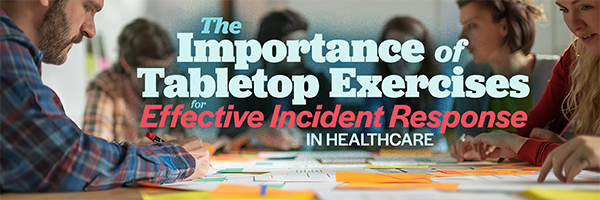
As a healthcare organization, being prepared for potential security incidents or data breaches is crucial. One of the most effective ways to test and refine your incident response plan is through tabletop exercises. These interactive simulations allow your team to walk through hypothetical emergency scenarios in a controlled, low-stress environment, identifying gaps and improving coordination before a real crisis occurs.
What are Tabletop Exercises?
Tabletop exercises are discussion-based sessions where key stakeholders come together to discuss their roles, responsibilities, and potential actions in response to a simulated incident. Unlike full-scale drills, these exercises don’t involve deploying actual resources or personnel. Instead, they focus on communication, decision-making, and problem-solving within a structured scenario.
Benefits of Tabletop Exercises for Healthcare Organizations
Conducting regular tabletop exercises can provide numerous benefits to healthcare organizations, including:
Validating Incident Response Procedures
By simulating various scenarios, you can assess the effectiveness of your current protocols and make necessary adjustments before a real incident occurs.
Improving Coordination and Communication
Tabletop exercises bring together stakeholders from different departments, promoting cross-functional collaboration and ensuring everyone understands their role in the incident response process.
Identifying Resource Gaps
These exercises can reveal deficiencies in staffing, equipment, or other resources required for an effective response, allowing you to address these gaps proactively.
Enhancing Preparedness
Regular tabletop exercises help maintain a state of readiness, ensuring that teams remain familiar with incident response procedures and can respond swiftly when needed.
Fostering a Culture of Preparedness
By involving all relevant stakeholders, including leadership, IT, security, privacy officers, and clinical staff, tabletop exercises cultivate a culture of preparedness and resilience within your organization.
Designing Effective Tabletop Exercises
To maximize the value of tabletop exercises, healthcare organizations should follow these best practices:
Tailor Scenarios to Specific Risks
Develop scenarios that reflect your organization’s unique vulnerabilities, such as data breaches, natural disasters, or cyber-attacks.
Involve All Relevant Stakeholders
Ensure participation from representatives across departments, including leadership, IT, security, privacy officers, and clinical staff.
Encourage Open Communication
Create an environment where participants feel comfortable sharing their perspectives and asking questions without fear of judgment.
Document Findings and Action Items
Capture insights, lessons learned, and action items during the exercise to inform future improvements to your incident response plan.
Follow Up and Implement Changes
Review the exercise findings and take steps to address any identified gaps or weaknesses in your incident response procedures.
By incorporating tabletop exercises into your overall incident response planning, you can cultivate a culture of preparedness, safeguarding patient data and maintaining resilience in the face of potential threats. Regular practice and continuous improvement are key to ensuring your healthcare organization is ready to respond effectively when an incident occurs.

Leave a Reply